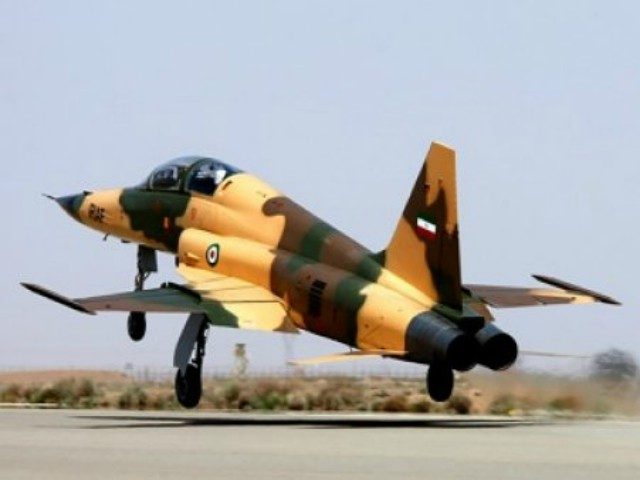WASHINGTON (AP) — Iran will likely buy new advanced fighter jets and tanks next year when a U.N. Security Council arms embargo is scheduled to be lifted, a senior U.S. intelligence official said Tuesday as the Defense Intelligence Agency released a new assessment of Iran’s military capabilities.
The DIA report concludes Tehran is committed to becoming the dominant power in the Middle East, and it warns that the Islamic Republic is making rapid progress developing attack drones and other missile systems. The report comes amid escalating tensions between Iran and the West in the wake of a series of attacks on commercial shipping vehicles and Saudi oil facilities this year that have been blamed on Tehran.
Speaking to reporters on Tuesday, an intelligence official said Iran would probably buy the tanks and aircraft from Russia and China. The U.S. has stringent economic sanctions on the Islamic Republic and those would likely continue even if the U.N. embargo is lifted. The official spoke on condition of anonymity to discuss intelligence matters.
Currently, Iran uses 1970s-era Soviet tanks and a number of older fighter aircraft, according to the DIA report.
Iran’s defense budget declined a bit this year and could face more cuts, as the country struggles under severe economic pressure due to the U.S. sanctions. There have been widespread protests in Iran as people have seen their savings evaporate amid scarce jobs and the collapse of the national currency, the rial. The DIA report said the budget problems could affect Tehran’s ability to meet its military goals. But, it added that Iran also uses other sources of funding to support its military activities, including money from private corporations, smuggling and other illicit activities.
Under the 2015 nuclear deal, the United Nations-imposed arms embargo on Iran is slated to be lifted in October 2020. The Trump administration pulled out of the deal last year and imposed new sanctions on Iran. The five other parties to the agreement — Russia, China, Britain, France and Germany — still support it.
Tensions between Iran and the West intensified earlier this spring, when there were a number of suspected Iranian attacks against commercial ships in the Persian Gulf region. Then in September, there was an attack on oil facilities in Saudi Arabia that U.S. and Western officials also blamed on Iran. In response, the U.S. sent about 3,000 troops along with missile defense systems to Saudi Arabia, and it beefed up its naval and air presence in the region.
Iran has denied involvement in the attacks and has warned the U.S. that any military response will spark an “all-out war” with immediate retaliation from Tehran.
The DIA report says Iran has also increased its use of drones, as surveillance assets to watch American troops and ships in the Gulf and as weapons platforms to launch attacks. And the report says Tehran is improving its cyberspace capabilities, both to collect information and to launch cyberattacks against U.S. and other targets.
“Although still technologically inferior to most of its competitors,” the report said, “the Iranian military has progressed substantially over the past few decades.”

COMMENTS
Please let us know if you're having issues with commenting.